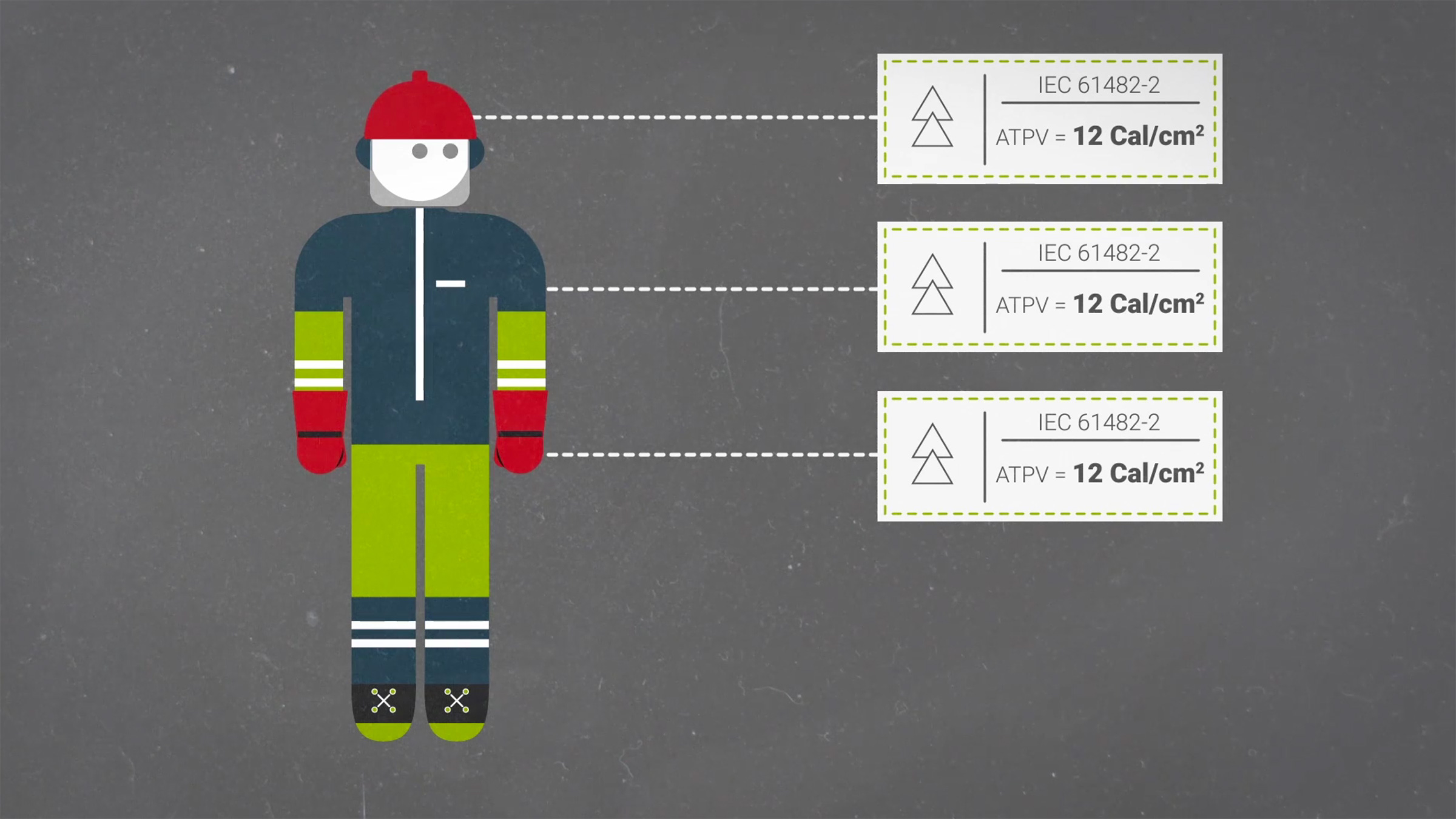IEC 61482-2:2018
Protective clothing for protection against thermal hazards associated with an electric arc
Standard for protective clothing that protects the user from thermal hazards associated with an electrical short circuit. The standard is relevant for work in areas with a risk of electric arcing. When working directly with transformers, carrying out cable work, working in open electrical distribution boxes or electrical household boxes, the potential arc energy ranges from 240 kj to 500 kj or more. This means that in some cases the incoming energy is higher than Class 1 or 2 in (box test). This explains why we also test according to the open arc test to give the fabrics or garments an arc rating in cal. /cm2 (ATPV or EBT).
Design requirements
- All seams must be flame tested according to IEC 61482-2
- All metal parts such as buttons, zips etc. on the outside or inside of the garment, must be covered, so as not to come into direct contact with the user's skin.
- Buttons, zips or other accessories must not catch fire or melt, or increase the risk of burns for the user.
- The garment must be able to be opened after an electric arc, and the inside of the garment must be completely intact with no melted or burnt parts.
- The garment that covers the upper part of the body must have long sleeves.
- The requirement for two-piece workwear clothes s a minimum of 20 cm overlap between jacket and trousers in all working positions.
Requirements for textiles
Material used for the production of clothing must be made of flame-retardant material. The substance must neither ignite nor melt, and must not shrink by more than 5%.
EN 61482-1-1 (open arc test)
Part 1-1, test method 1: In this test method, the arc rating (ATPV or EBT5o) is determined for flame-resistant material or clothing. ATPV or EBT are both evaluated in the same test, an open arc test. The first result obtained is the reported arc rating, which is indicated in cal. /cm2. If the material has a higher thermal insulation value than the arc strength in relation to heat, the material will first crack. Otherwise, burns occur before it cracks. The lowest value is the one used when labelling the garments. Neither option is better than the other.
Basically, EBT material is more insulating than strong, and ATP material less insulating than strong. EBT usually indicates that the garment is knitted and more comfortable, but that it is no less protective for the wearer. You should never make a decision about which protective clothing to wear based on whether the garment has an ATPV or EBT rating. They are considered more as functional equivalents. Arc Thermal Performance Value (ATPV) is the incoming energy on a material that results in a 50% probability that sufficient heat transfer through the sample is assumed to cause a second degree burn based on the stoll curve arc rating measured in cal. /cm2. The higher the value, the better the protection.
Energy Breakopen Threshold (EBT) is the incoming energy on a material that results in a 50% probability of crack formation. Crack formation is defined as an open area of at least 1.6 cm2. The higher the value, the better the protection.
Both ATPV and EBT can be tested on single or multiple layers of material. When you test several layers, you achieve a higher value than if the material was tested separately. The reason for this is that air trapped between the materials also has an insulating and protective effect.
EN 61482-1-2 (Box test)
Part 1-2- Testing method 2: This test method establishes the arc-protection classification of the material and clothing when using a limited and aimed arc. The garments are tested in two classes in the same "Box test". (Voltage 400 V, Durability 500 ms, Frequency 50 Hz or 60 Hz.
Tests can be completed in two different test classes
Class 1 = 4 KA (arc energy 168 kj)
Class 2 = 7 KA (arc energy 320 kj)
The result is approved or not approved.
User information
Two-piece protective clothing must be used together to achieve the specified level of protection. For optimal protection of the whole body, the clothing must always be closed, and used together with other suitable protective equipment such as flame retardant underwear, safety helmet with face shield, protective gloves and protective footwear. Clothing made of synthetic material can melt in the event of an arc exposure and cause serious skin damage. Consideration must be given to the environment and risk conditions in the workplace. Read the user manual carefully before putting work clothes into use. All garments damaged by dirt must be cleaned, garments with holes must be replaced. Deviations from these recommendations can lead to serious personal injury.

Source: Trainor


